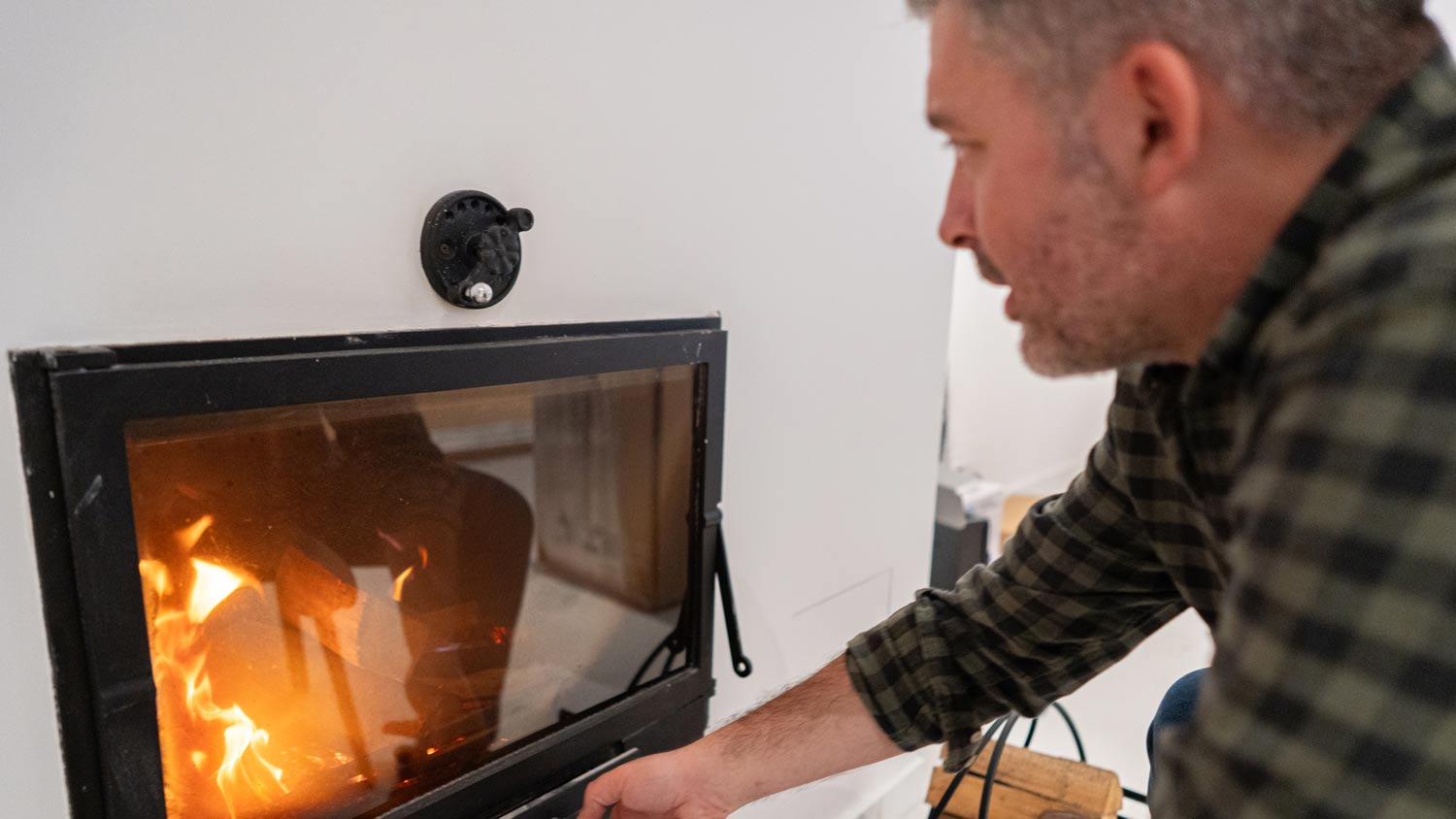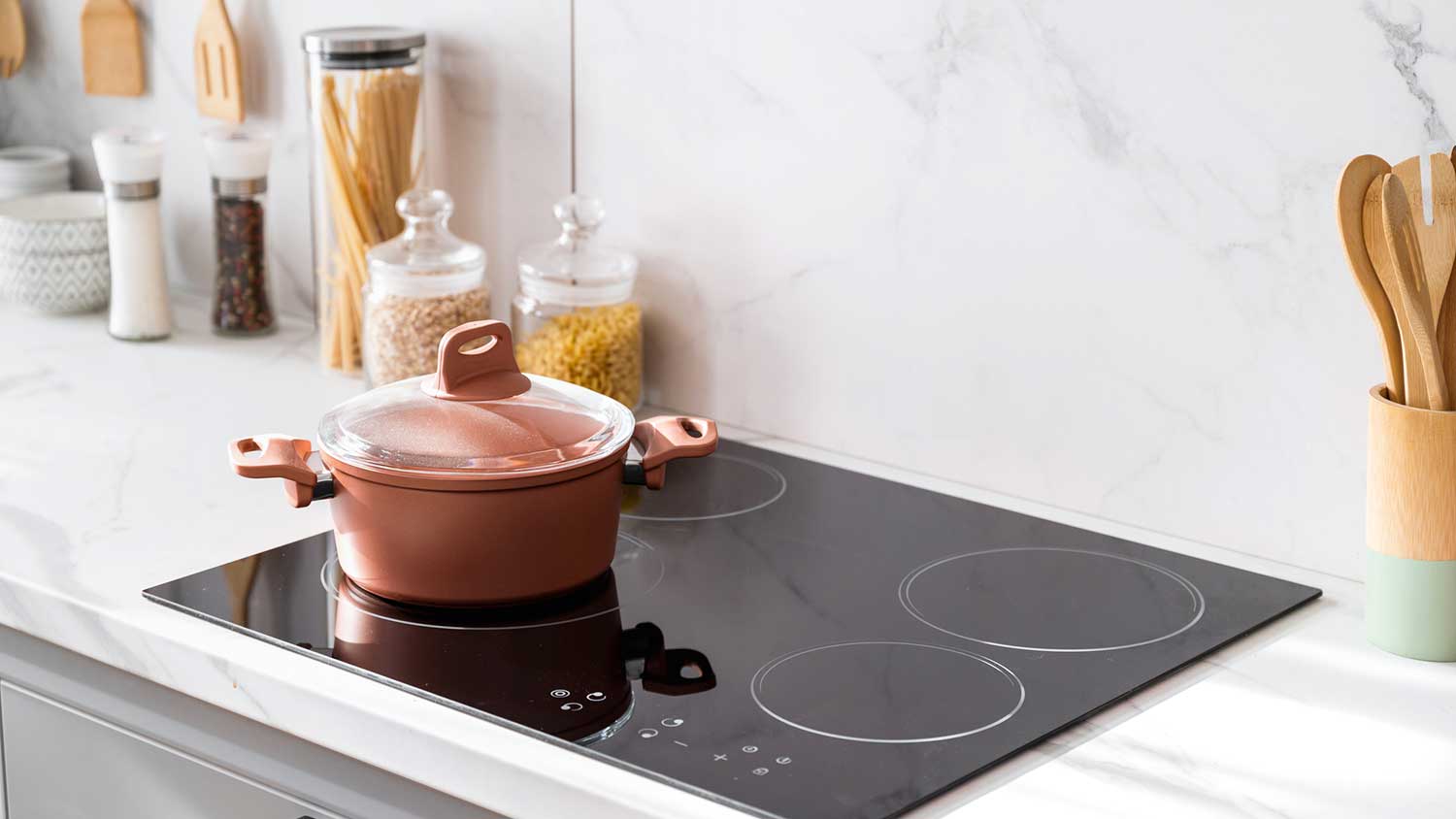
Installing a gas dryer can help you save on your monthly energy bills. Depending on whether you need a new gas line, gas dryer installation costs will vary greatly.
Turn up the heat with pellets or propane


Pellet stoves burn compressed pieces of organic material known as pellets.
Propane fireplaces are gas fireplaces that run on propane.
On average, it costs $1,250 to $4,000 to install a pellet stove.
Gas fireplaces, including propane-powered models, cost $2,500 to $10,000.
There’s nothing quite as comforting as curling up in front of the fire on a chilly winter evening. But before you start planning your cozy night in, you’ll need to choose the right heating source for your home. Wood-burning fireplaces are a classic pick, but there are also more efficient, lower-maintenance alternatives—including pellet stoves and propane fireplaces. Below, we’ll compare pellet stoves versus propane fireplaces to help you find the best option.
Pellet stoves and propane fireplaces are both heating sources for your home, but they run on different types of fuel. The former uses pellets—small, cylinder-shaped pieces of compressed wood or other organic material—while the latter runs on propane. Both are fairly simple to use, but it takes a bit of extra work to keep a pellet stove burning.

A pellet stove creates heat by burning compacted wood waste known as pellets. Alternatively, some pellet stoves may run on corn kernels or nutshells. Available as freestanding units or fireplace inserts, these heating sources have several important components, including a hopper for loading pellets, a fan that pushes hot air into your living space, and a thermostat, which you can set to your preferred temperature.
| Pros | Cons |
|---|---|
| Easy to control the temperature | Pellets can be heavy and require storage space |
| Produces low levels of emissions | Runs on electricity |
| Doesn’t always require a chimney | Can be noisy |
Best for:
People searching for a clean heating source
Anyone who wants to set their stove to a particular temperature
Individuals interested in an eco-friendly whole-home heating option
With a pellet stove, heating your home is simple. Once the pellets are loaded into the hopper, all you need to do is set your preferred temperature and leave the rest to the stove. Plus, as a pellet stove runs, it produces few pollutants. In fact, according to the U.S. Department of Energy, they’re the cleanest solid-fuel residential heating appliance.
You may also have some flexibility in terms of where you install a pellet stove within your home. For example, you can put a pellet stove insert into an existing fireplace, or you can vent a pellet stove through your roof or an exterior wall.
To use a pellet stove, you’ll need a dry place to store your pellets. You’ll also need to be able to carry the pellet bags—which usually weigh around 40 pounds each—from the storage area to your stove. If you keep your stove burning at a low setting, one bag of pellets lasts around 26 hours.
Another downside is that pellet stoves require electricity to power their various electrical components. Not only does this increase your operating costs, but it also means you’ll need a backup power supply—like a generator—to use your pellet stove during a power outage. Plus, some pellet stoves make noise when they’re on, which may bother some people.

A propane fireplace is a type of gas fireplace. Although it runs on propane, the firebox often has faux logs to make it look more like a traditional wood-burning fireplace. Propane fireplaces come in multiple styles, including vented models, which send emissions out through a chimney, or ventless versions, which don’t require a chimney connection and exhaust directly into your home.
| Pros | Cons |
|---|---|
| Doesn’t need manual refueling | Can be harder to install than pellet stoves |
| Minimal cleaning required | Upfront costs may be higher |
| Can be installed with or without a chimney | Ventless propane fireplaces are banned in certain areas |
Best for:
Folks who’d prefer not to haul or store bags of pellets
People looking for a heating source that doesn’t require regular cleaning or upkeep
Anyone who wants quick heating with the flip of a switch
Unlike pellet stoves, propane fireplaces don’t require regular refilling. Instead, they connect to your home’s propane tank via a gas line, so there’s minimal effort needed to use one of these fireplaces. There’s less cleaning involved, too, because propane fireplaces don’t produce ash when they burn.
There are a variety of propane fireplace options to choose from, including built-in, insert, and freestanding styles. Even if you don’t have a chimney, you may be able to use a propane fireplace—you’ll just need to install a ventless (rather than a vented) model.
Installing a propane fireplace is often harder than setting up a pellet stove. In addition to venting it out of your chimney or wall, you have to connect the fireplace to a gas line and propane tank as well. Ventless models don’t require venting, but they’re not permitted in all areas, so check your local laws before buying one.
In general, it costs more to install a propane fireplace than a pellet stove—both for the unit itself and labor. You’ll pay even more if you have to run a new gas line or install a propane tank.
So, which heating source best meets your needs? Here’s how propane versus pellet stoves compare in different categories, including cost and maintenance.
On average, installing a pellet stove costs between $1,250 and $4,000, including materials and labor. By comparison, a typical propane or natural gas fireplace installation costs $2,500 to $10,000. Ongoing expenses will vary depending on a few factors, including the size of your stove or fireplace and how often you use it.
With a propane fireplace, there’s no need to buy and store pellets, reload the hopper, or dispose of ash—which makes it less labor-intensive to run than a pellet stove.
However, whether you have a pellet stove or propane fireplace, you’ll want to schedule an annual inspection to make sure it’s working safely. You’ll pay a chimney sweep $130 to $200 for pellet stove cleaning and inspection or $80 to $130 for a gas fireplace maintenance visit.
Pellet stoves and propane fireplaces both come in a range of shapes, sizes, and styles, but overall, propane fireplaces are more customizable. Inside the firebox, you can install ceramic logs to recreate the look of a wood-burning fireplace, or you can add other decorative elements, like beads or stones.
From average costs to expert advice, get all the answers you need to get your job done.

Installing a gas dryer can help you save on your monthly energy bills. Depending on whether you need a new gas line, gas dryer installation costs will vary greatly.

Explore the common types of oven repairs and how much they cost based on the problem, the part, and the type of oven. This guide will tell you the average cost to repair an oven.

Discover the average cooktop installation cost, key price factors, and tips to save. Learn what impacts your total cost and how to budget for your new cooktop.

Dealing with a clogged dishwasher? Use this guide on how to drain a dishwasher to empty it and clear out any debris that’s causing a backup.

If you notice your dryer vent leaking water, you could be prone to mold growth and water damage. Use this DIY guide to remedy the issue right away.

Not sure if you should repair or replace your cooktop? Our guide helps you make the right decision for your appliance.